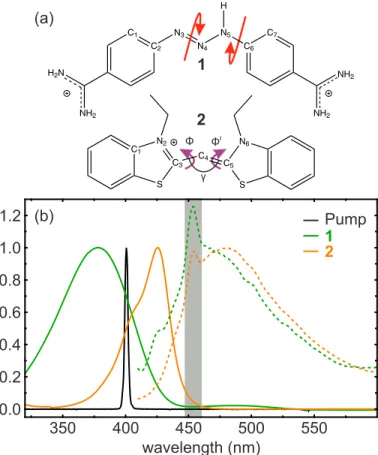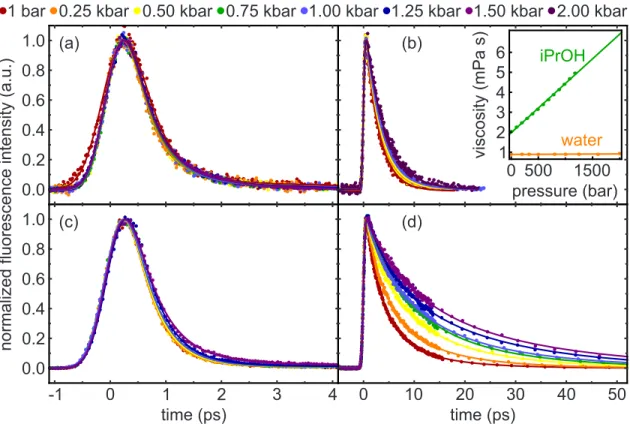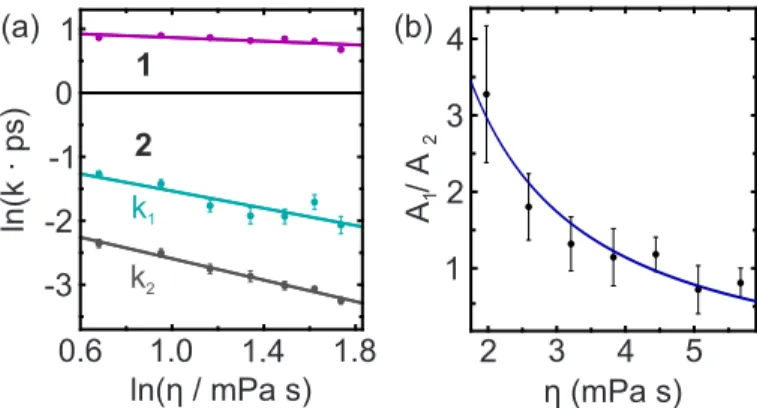Jour nal Name
Impact of Kilobar Pressures on Ultrafast Triazene and Thiacyanine Photodynamics †
Lena Grimmelsmann, a Vitor Schuabb, b Beritan Tekin, a , Roland Winter, b and Patrick Nuernberger ∗a
Very short fluorescence lifetimes evidence ultrafast deacti- vation of photoexcited molecules. To unveil the underlying mechanism for two compounds exhibiting (sub)picosecond emission dynamics, we combine femtosecond fluores- cence upconversion with high-pressure liquid-phase spectroscopy. For the triazene berenil, the absence of a pressure dependence corroborates a bicycle-pedal motion as deactivating process. In the thiacyanine NK88 which may undergo a bi-phasic deactivation, our results suggest that kilobar pressures lead to a modification of the excited-state potential energy surface, thereby changing the branching ratio of two competing pathways and opening a possibility to steer the product distribution of the photoreaction.
Photochemical reactions in the liquid phase are commonly sen- sitive to the solvent whose decisive properties comprise the po- larity, viscosity, dielectric constant, or hydrogen-bonding capabil- ities. To deduce the influence of these quantities, reactions are often studied in different solvents and the reaction rates are corre- lated with a certain property. However, solvent substitution bears the innate disadvantage that not only one but rather all solvent properties are in effect varied. A more purposive approach for changing e.g. the viscosity is realized by increasing the pressure or decreasing the temperature 1 which leaves changes of the sol- vent polarity at a moderate level. ∗ A further advantage of the pressure modulation approach is that the thermal energy remains
a
Physikalische Chemie II, Ruhr-Universität Bochum, 44780 Bochum, Germany; E-mail:
patrick.nuernberger@rub.de
b
Physikalische Chemie I – Biophysikalische Chemie, Technische Universität Dortmund, Otto-Hahn-Straße 4a, 44227 Dortmund, Germany
†


